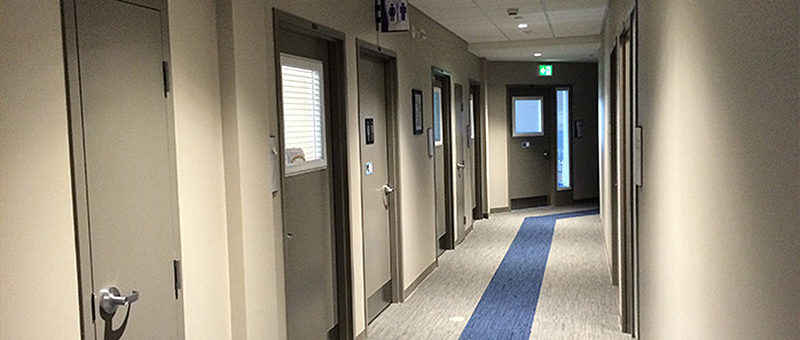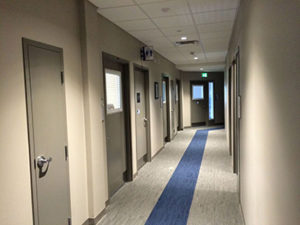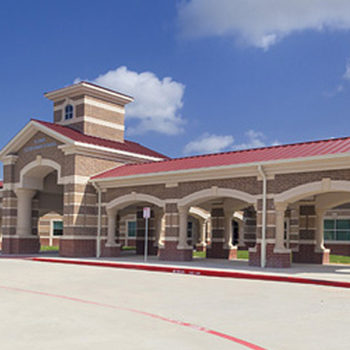
Health Care Design Caters to Autism Spectrum Disorder
- Posted by Gaby
- On October 5, 2016
- 0 Comments
By Viviane Chan
More and more people are being diagnosed with autism spectrum disorder (ASD). For health care construction and design professionals, this means that a greater understanding of the special requirements of this growing patient demographic is needed to create spaces that are optimized to their wellbeing.
Special Design Requirements
Many autistic children are highly sensitive to the sight, sound and feel of their environment. Therefore, autism-friendly spaces need to pay close attention to texture, uniformity, acoustics and lighting conditions.
For ASD patients, designers should consider ways to eliminate excess noise that can be distracting and create a sensory overload for the patient. Therefore, window and door solutions need to have sound-dampening capabilities. Good observation is required to allow staff to readily monitor patients without them feeling infringed. Personal space and privacy are essential to many ASD patients. Care should be taken to reduce any sounds, rattles and related noises. This eliminates blinds, curtains and exterior shades as privacy solutions. Insulation from other noises in the environment is important for similar reasons.
Indirect lighting should be used, and lighting needs to be adjustable to ensure protection from over-bright lights and glare, both of which can be distressing to ASD patients. Emphasis should be placed on natural lighting. Uniformity of textures and design can help create a soothingly consistent environment. Design elements should be simple and familiar, both in terms of reduction in detail and palette of materials, as ASD patients can get distracted or absorbed in minutiae.
Case Study: Bethesda-Niagara Family Center

Unicel’s ASD-friendly health care designs offer features that eliminate distractions while promoting privacy.
Since 1937, Bethesda Residential Holdings Inc. (Bethesda), based in Ontario, Canada, has provided a wide range of support and services to individuals with special needs in the Niagara, Hamilton, Brant, Haldimand and Norfolk regions of Ontario. As the number of children diagnosed with an ASD or other developmental disabilities in the Niagara region increases, Bethesda’s service mandates continue to grow. Bethesda has adopted seven new children’s programs for families seeking a diagnosis and support for their special needs child. Bethesda currently serves approximately 1,000 children and youth with ASD, with hundreds more on a waiting list. To better address this burgeoning need, Bethesda launched a plan in 2013 to construct a new Family Centre in Ontario. The Family Centre adopted ASD-friendly principals and educated parents on the importance of such designs.
Materials that Matter
One design feature architects used at Bethesda was Unicel’s Vision Controlintegrated louvers. Integrated louvers are hermetically sealed glass unit combining louvers within glass that can be customized to virtually any shape for interior or exterior glazing applications. Their advanced louvered glazing technology typically eliminates strings, ensures alignment, requires no maintenance and provides the ideal privacy solution for ASD patient spaces.
The door and sidelite units from Unicel are ideal for limiting noise and distractions from the corridor areas for children in therapy. Staff had previously covered windows and openings with paper in an attempt to ensure privacy and soften lighting. Now, the vision control units vastly improve the therapy environment by enabling easy and more effective privacy and lighting controls. The perfectly aligned internal louvers ensure a calming visual uniformity and are operated soundlessly. The units in openings between rooms allow parents to discreetly monitor their child’s progress with therapists, without the child feeling observed.
Viviane Chan is the head of sales for Unicel Architectural. She can be reached at vchan@unicelarchitectural.com



0 Comments